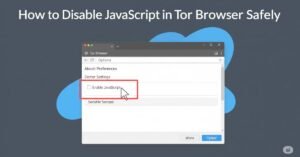Most newbies ask what is the easiest programming language to learn to code is. Truthfully, learning to code is not as scary as it looks if you start with the right language. There are languages that are specifically designed to be extremely beginner-friendly, with simple syntax, lots of individuals to help and guide them, and many resources to help.
Choosing your first language is kind of like selecting your first bike; some are simple and easy to ride, and others are heavy and difficult to ride. In this article, you’ll find out what makes a programming language simple, the best choices for beginners, real-world examples, professional tips, and a simple way to choose the best one for you.
What Makes a Programming Language Easy?
When you ask what is the easiest programming language to learn, the answer depends on key factors that make some languages more beginner-friendly than others. The first factor is syntax. Syntax refers to the words and rules you use to write code. A language like Python is simple and easy to read, almost like plain English, while a language like C++ is complex and full of symbols. For beginners, fewer rules and cleaner code mean faster progress and less frustration.
Another factor is community support. A language with a large community, like Python or JavaScript, comes with many free tutorials, online courses, YouTube lessons, and forums where you can ask questions. This makes the learning journey easier because you never feel alone. In contrast, smaller or less popular languages have fewer learning resources, which can slow down beginners.
You will like it: How Long Does It Take to Learn CSS
The Most Beginner-Friendly Programming Languages
When looking at the easiest programming languages to learn, some names stand out. Python is usually the top choice because it is simple to read and write. It is also used in real-world areas like data science, artificial intelligence, and web development. This gives learners motivation to continue because they see practical results.
JavaScript is another easy option because it runs inside browsers, meaning you can quickly create websites and see results. For learners interested in web development, this is the best starting point. Ruby is known for its clean and friendly syntax, while Scratch is a visual programming language perfect for kids or complete beginners. C#, often used in game development with Unity, is also a strong option for those who want to build game
Direct Comparison of Beginner Languages
It is often helpful to compare languages side by side when deciding what is the easiest programming language to learn. Each language has strengths, weaknesses, and areas where it shines. Below is a table that shows how some beginner-friendly languages compare.
This comparison shows that while Python is best for overall ease and versatility, JavaScript is perfect if you want quick results on the web. Scratch is only for early learners but works well to explain coding logic.
| Language | Syntax Simplicity | Community Support | Job Demand | Best For |
| Python | Very Easy | Excellent | High | Data, AI, Web |
| JavaScript | Easy | Excellent | Very High | Web Apps |
| Ruby | Easy | Good | Medium | Simple Web Apps |
| Scratch | Visual Blocks | High | Low | Kids, Beginners |
| C# | Moderate | Good | High | Game Development |
Real-Life Examples and Case Studies
Learning about real people can make the question what is the easiest programming language to learn feel less abstract. Consider a student named Anna who started with Python. She had no technical background, yet within six months she was building small data analysis projects. Python’s clear syntax helped her learn concepts fast and stay motivated.
Another case is Mark, who started with JavaScript because he wanted to build websites. In less than a year, he created his own portfolio website and later got a freelance project. By seeing results in the browser, he felt encouraged to keep coding. A third example is children who begin with Scratch. They learn problem-solving and programming logic with colorful drag-and-drop blocks before moving to Python as teenagers. These examples prove that the best choice depends on your personal goals and learning style.
Read More: How to Add Textures in HTML Games
Expert Insights and Opinions
Experts also share valuable thoughts on what is the easiest programming language to learn. John Sonmez, a well-known programming educator, often says that Python should be the first choice for most beginners because of its readability and real-world use. Similarly, instructors at coding bootcamps highlight JavaScript because it allows beginners to quickly see results through interactive websites.
Universities also note the value of Scratch for very young learners, as it introduces programming logic without the stress of typing errors. An expert at Harvard’s CS50 course once stated, “Python removes barriers and lets students focus on solving problems instead of fighting the syntax.” These expert opinions show why these languages remain favorites among educators and professionals.
How to Choose the Right Language for You
Choosing the easiest programming language to learn depends on your future goals. If you want to work in data science, artificial intelligence, or general-purpose programming, Python is the smartest choice. If your dream is web development, then JavaScript is better because it directly connects you to websites and browsers.
You should also think about your learning style. If you like visual learning, starting with Scratch might give you confidence. If you enjoy building games, C# with Unity could be the perfect entry point. Another factor is resource availability. Some regions have more teachers, tutorials, or communities for certain languages, so it’s smart to pick a language supported in your area.
Code Examples in Beginner Languages
Another way to understand what is the easiest programming language to learn is by looking at simple code examples. Below is a table showing how “Hello World” looks in different languages.
From this table, you can see why Python feels the easiest. The code looks clean and similar to English. This is one reason many schools and universities start with Python for teaching programming basics.
| Language | Example Code |
| Python | print(“Hello, World!”) |
| JavaScript | console.log(“Hello, World!”); |
| Ruby | puts “Hello, World!” |
| C# | Console.WriteLine(“Hello, World!”); |
Common Mistakes Beginners Make When Learning a Programming Language
When people search what is the easiest programming language to learn, they often believe that choosing the “right” language is the only important step. The truth is, beginners often fall into common traps that make learning harder than it needs to be. One mistake is jumping between languages too quickly. Many learners start with Python, then switch to JavaScript, then try C++, and end up confused. It is better to master the basics of one language before moving to another.
Another common mistake is focusing only on theory without building projects. Reading tutorials or watching videos without practice feels easy, but it doesn’t build real skills. Beginners should start creating small programs, even if they are simple calculators or websites. A third mistake is ignoring debugging skills. Debugging is how you fix errors in your code. Many new learners feel frustrated when they see error messages, but learning how to read and solve them is an important part of becoming a programmer.
Why Starting Matters More Than the Language
The question what is the easiest programming language to learn is valuable, but the more important truth is that starting matters more than choosing perfectly. A language is just a tool. What truly matters is your persistence, practice, and consistency. A student who starts with Python and sticks with it for six months will become more skilled than someone who spends six months just deciding which language to pick.
Programming is like learning how to swim. You can read books about swimming techniques or compare pools, but until you actually jump into the water, you won’t learn. Similarly, the best path is to pick one beginner-friendly language, commit for a few months, and learn the basics of logic, loops, functions, and problem-solving. Once you understand these, moving to other languages will feel natural.
FAQ’’S
Is Python really the easiest language for beginners?
Yes, Python is considered the easiest because of its clean syntax, wide use, and strong community support.
Can I start with JavaScript instead of Python?
Yes, if you want to build websites, JavaScript is an excellent beginner option because it works directly in browsers.
Do I need math skills to learn programming?
Basic logic helps, but you don’t need advanced math to start programming. Most beginners succeed with practice, not math.
How long does it take to learn a beginner language?
It depends on your effort, but many beginners can build small projects in 3 to 6 months with consistent practice.
Can I switch to another programming language later?
Yes, once you learn one language, switching becomes easier because the logic and problem-solving skills carry over.
Conclusion
So, what is the easiest programming language to learn? While answers vary, Python remains the best choice for most beginners due to its readability, versatility, and career opportunities. JavaScript is also excellent for those aiming at web development, while Scratch works well for kids. The key is to pick one and start learning because the sooner you begin, the sooner you grow. Remember, it is not the language alone that matters, but the effort and consistency you put into learning it.




